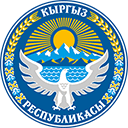Investor’s guide
CUSTOMS REGULATION
As of today – the Kyrgyz Republic is a member of the Eurasian Economic Union (EEU).
Basis: The Treaty on Accession of the Kyrgyz Republic to the Treaty on the Eurasian Economic Union dated May 29, 2014 [1].
Signed: December 23, 2014
Entry into force: August 12, 2015
Customs relations in the Kyrgyz Republic are regulated by the customs legislation of the Customs Union (including the Customs Code of the Customs Union), the customs legislation of the Kyrgyz Republic, which is based on the Constitution of the Kyrgyz Republic and consists of the Law “On Customs Regulation in the Kyrgyz Republic” and other normative legal acts, as well as international treaties and other international customs law provisions.
The authority in charge of customs regulation in the Kyrgyz Republic is the State Customs Service under the Government of the Kyrgyz Republic.
The goods are subject to customs declaration when placed under a customs procedure or in other cases specified by the Customs Code of the Customs Union.
Customs declaring is made in writing and/or electronically by filling out a customs declaration form.
Customs Procedures
The following types of customs procedures are introduced for the goods for the purposes of customs regulation:
- release for internal consumption;
- export;
- customs transit;
- customs warehouse;
- processing on the customs territory;
- processing outside the customs territory;
- processing for internal consumption;
- temporary import (admission);
- temporary export;
- re-import;
- re-export duty-free trade;
- destruction;
- abandoning in favor of the state;
- free customs zone;
- free warehouse;
- special customs procedure (customs procedure specifying for customs purposes the requirements and terms of use and/or disposal of individual categories of goods on the customs territory of the EEU or outside it.
Free customs zone and free warehouse customs procedures are specified in international treaties of the member-states of the Customs Union.
A special customs treatment shall be established by the legislation of a member state of the customs union in compliance with the conditions and in respect of the categories of commodities, which are defined by a decision of the Commission of the Customs Union.
Customs Payments
Customs payment include the following:
- import customs duty;
- export customs duty;
- value-added tax collected upon the import of goods to the customs territory of the EEU;
- excise duty tax(s) collected upon the import of goods to the customs territory of the EEU;
- customs fees.
Special, anti-dumping and compensation duties are introduced in compliance with the Agreement on the EEU and are collected according to the procedure envisaged in the Customs Code of EEU.
Customs Control, its Object and Forms
Customs control is a multitude of measures taken by the customs bodies, including the use of the risk control system, to ensure the observance of the customs legislation of the EEU and the legislation of the member-states of the EEU.
Officials of the customs bodies for implement customs control of:
- goods, including transport vehicles, moved across the customs border and/or subject to declaring in compliance with the Customs Code of the EEU;
- customs declaration, documents and information on the goods that must be submitted in compliance with the customs legislation of the EEU;
- activities of parties pertaining to the moving of goods across the customs border, rendering services in the customs sphere, as well as those, carried out as part of individual customs procedures;
- persons crossing the customs border.
Customs control is implemented in the customs control zone, as well as in other places specified by the customs bodies being the place of location of goods, transport vehicles and documents containing information on them, including those in the electronic form.
The forms of customs control include the following:
- checking of documents and information;
- oral interrogation;
- getting explanations;
- customs surveillance;
- customs examination;
- customs search;
- personal customs search;
- checking of labelling of goods with special stamps, presence of identification signs on them;
- customs examination of rooms and territories;
- registration of goods under the customs control;
- checking of the system of registration of goods and reports;
- customs check.
[text is provided by Kalikova & Associates]
[1] http://www.eurasiancommission.org/ru/nae/news/Pages/12-08-2015-1.aspx

